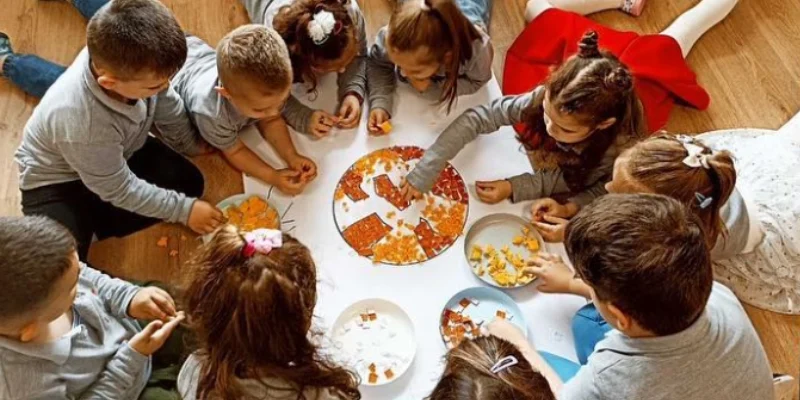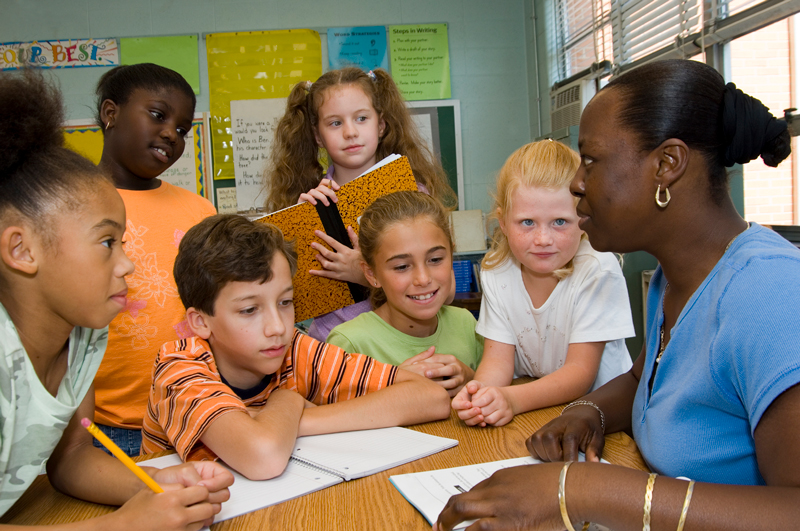
Project-Based Learning: Preparing Students for Real-World Challenges
Discover how project-based learning prepares students for real-world challenges.As I watched my students present their solutions for reducing plastic waste in our community, I couldn't help but feel a sense of pride and excitement. These 7th graders had spent weeks researching, collaborating, and problem-solving - skills that would serve them well beyond the classroom. This is the power of project-based learning (PBL), an approach that is transforming education and preparing students for real-world challenges in ways traditional methods simply can't match.

What is Project-Based Learning?
At its core, project-based learning is an instructional approach where students gain knowledge and skills by working for an extended period to investigate and respond to an authentic, engaging, and complex question, problem, or challenge[1]. Unlike traditional lecture-based instruction, PBL puts students in the driver's seat of their own learning.
The Shift from Traditional to Project-Based Learning
For too long, education has focused on memorization and regurgitation of facts. But in today's rapidly changing world, simply knowing information isn't enough. Students need to be able to apply knowledge, think critically, collaborate effectively, and solve complex problems. This is where PBL shines.
In my experience, PBL transforms the classroom into a vibrant hub of inquiry and innovation. Gone are the days of students passively receiving information. Instead, they become active participants in constructing their own understanding.
Core Elements of Effective Project-Based Learning
Successful PBL incorporates several key elements:
- Authentic, real-world problems
- Student choice and voice
- Inquiry and innovation
- Reflection and revision
- Public presentation of work
For example, in our plastic waste project, students chose specific aspects to focus on, conducted surveys in the community, and ultimately presented their findings and proposed solutions to local government officials[2].
Benefits of Project-Based Learning
The benefits of PBL are numerous and far-reaching. I've seen firsthand how it develops critical thinking and problem-solving skills as students grapple with complex challenges. Collaboration and communication abilities soar as they work in teams and present their findings. Perhaps most importantly, student engagement skyrockets. There's something magical about seeing a previously disinterested student come alive with passion for their project.

Research backs up these observations. Studies have shown that PBL leads to better retention of knowledge and improved preparation for college and careers[3].
Challenges in Implementing PBL
Of course, implementing PBL isn't without its challenges. Time constraints and curriculum pressures can make it difficult to dedicate extended periods to projects. Assessment can be trickier than traditional tests. And for many teachers, including myself initially, it requires a significant shift in mindset and teaching approach.
But in my experience, the rewards far outweigh the challenges. With proper planning and support, these obstacles can be overcome.
Real-World Examples of Successful PBL Implementation
Let me share a couple of inspiring examples I've encountered:
In a high school economics class, students created business plans for real local startups, presenting their ideas to actual investors. Not only did they learn economic principles, but they also gained invaluable entrepreneurial experience.
At an elementary school, third graders designed and built a butterfly garden, integrating lessons in science, math, and community service. The pride on their faces as they watched butterflies flock to their creation was priceless.
The Role of Technology in PBL
Technology has been a game-changer for PBL. Digital tools enable students to collaborate across distances, access vast information resources, and create professional-quality presentations. In many ways, technology in PBL mirrors how it's used in the real world, preparing students for future careers[4].
PBL and Equity in Education
One aspect of PBL that I'm particularly passionate about is its potential to engage diverse learners. By allowing students to choose projects that resonate with their interests and experiences, PBL can level the playing field and give voice to students who might otherwise feel marginalized.
However, we must be mindful of ensuring equal access to resources, as some projects may require materials or technology that not all students have at home.
The Future of Project-Based Learning
As we look to the future, I believe PBL will become increasingly integrated with other innovative approaches like competency-based education and personalized learning. Imagine a world where students progress based on mastery of skills demonstrated through real-world projects tailored to their interests and goals. The possibilities are truly exciting.
Tips for Educators Looking to Implement PBL
For educators interested in diving into PBL, my advice is to start small. Begin with a single unit or project and build from there. Collaborate with colleagues and seek out resources from organizations like the Buck Institute for Education (BIE) or Edutopia[5].
Remember, it's okay to make mistakes. In fact, modeling how to learn from failures is one of the most valuable lessons we can teach our students.
Final Words
Project-based learning isn't just another educational fad - it's a powerful approach that prepares students for the complexities of the real world. By engaging students in meaningful, challenging projects, we're not just teaching content; we're cultivating the skills, mindsets, and confidence they'll need to thrive in an ever-changing future.
As educators, parents, and policymakers, we have a responsibility to embrace methods that truly prepare our students for what lies ahead. PBL offers us that opportunity. So I challenge you: How can you incorporate project-based learning in your educational setting? The future of our students - and our world - may depend on it.
References
- PBLWorks
- Frontiers in Psychology
- Prodigy Game Blog
- PIJED Journal
- ScienceDirect
- Edutopia
- TeachThought
- Educate Me Blog
- Purdue University
- Tapas Education Blog
Gamification in Early Childhood Education: Learning Through Play






Comments
While project-based learning has its merits, it’s important to ensure that all students are equally supported. Some may struggle without traditional structures, so balancing PBL with other teaching methods might be necessary.
I really enjoy project-based learning! It makes classes more interesting and helps me understand how to apply what we learn in real life. Looking forward to more initiatives like this.
Project-based learning is an effective pedagogical approach that fosters collaboration, creativity, and practical application of knowledge. This article provides insightful strategies for educators to implement PBL successfully.
This article beautifully captures the essence of project-based learning. As a high school teacher, I’ve seen firsthand how engaging students in real-world challenges can significantly enhance their critical thinking and problem-solving skills.
As a parent, I appreciate the focus on preparing students for real-world challenges. It’s reassuring to know that schools are evolving to equip our children with the necessary skills for the future.
Leave a Comment